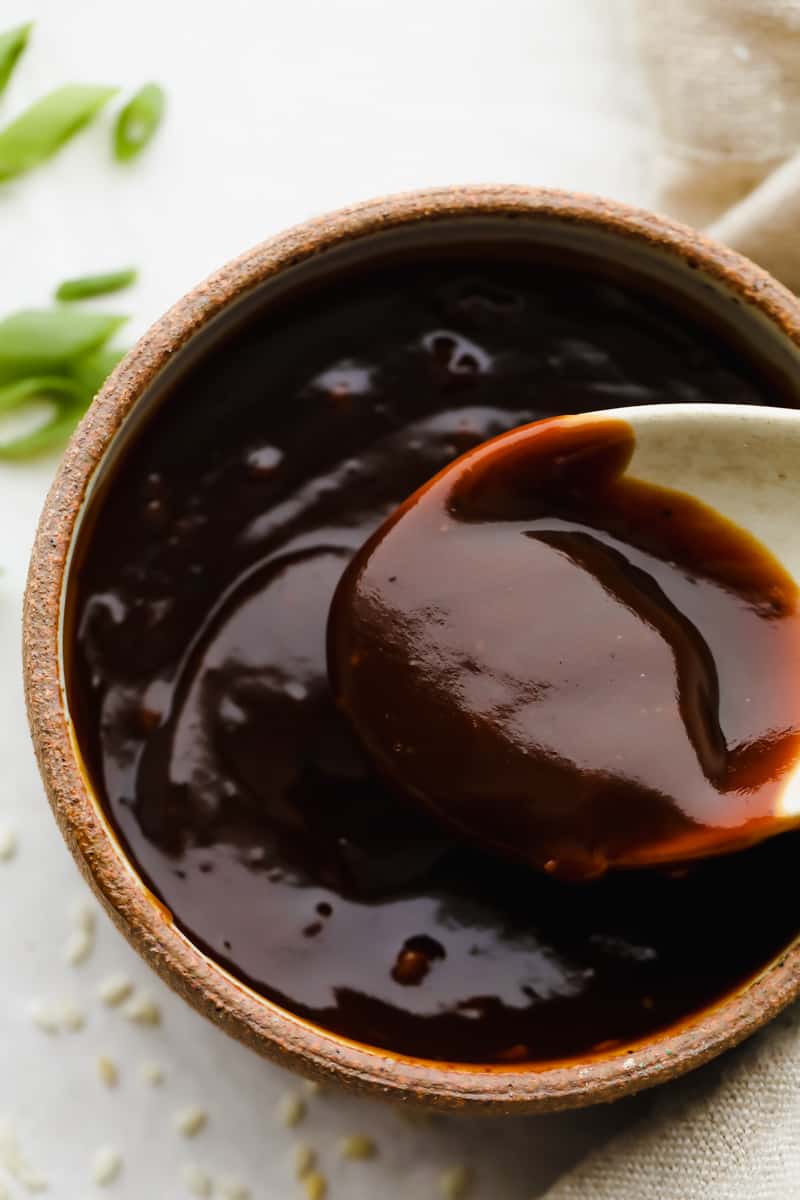Hoisin Sauce: Easy Recipe and Uses
Hoisin sauce, a thick and fragrant condiment, infuses many Asian dishes with flavor. Typically used in Chinese cuisine, it’s known for its sweet, tangy, and slightly spicy profile. Hoisin sauce ingredients often include soybeans, garlic, vinegar, and various spices, creating a complex and rich taste.
The Origin and Cultural Significance
Hoisin sauce originates from China. Named from the Cantonese word for seafood, it initially complemented seafood dishes, despite containing no seafood itself. Over time, its use broadened to various culinary applications, including marinades, stir-fry dishes, and dipping sauces. Hoisin sauce holds significant cultural value, symbolizing the evolution of Chinese cuisine and its adaptability across diverse culinary traditions.
Key Ingredients for Homemade Hoisin Sauce
Essential Ingredients Overview
Homemade hoisin sauce relies on a blend of specific ingredients to achieve its signature flavor. These ingredients include:
- Soy Sauce: Acts as the base, providing the umami depth and salty profile.
- Peanut Butter: Adds creaminess and a slightly nutty flavor.
- Miso Paste: Enhances umami and adds complexity.
- Honey: Contributes the necessary sweetness.
- Rice Vinegar: Balances the sweetness with a tangy acidity.
- Garlic: Infuses the sauce with aromatic intensity.
- Five-Spice Powder: Offers a blend of star anise, cloves, Chinese cinnamon, Sichuan peppercorns, and fennel seeds, contributing to the sauce’s unique taste.
- Sriracha: Adds a hint of spiciness.
- Soy Sauce: Tamari or coconut aminos work as gluten-free alternatives.
- Peanut Butter: Almond butter or tahini cater to nut allergies or preferences.
- Miso Paste: If unavailable, use a mix of soy sauce and a bit more peanut butter.
- Honey: Agave nectar, maple syrup, or brown sugar can replace honey for vegan or alternative sweetness.
- Rice Vinegar: Apple cider vinegar or white wine vinegar serve as suitable substitutes.
- Garlic: Garlic powder can replace fresh garlic, though fresh is preferred for best flavor.
- Five-Spice Powder: Individual spices or a combination of anise, cloves, and cinnamon can replicate the mix.
- Sriracha: Any hot sauce or chili paste can step in for Sriracha, adjusting to your heat preference.
Step-by-Step Guide to Making Homemade Hoisin Sauce
Preparing Your Ingredients
Gather all your ingredients to ensure a smooth cooking process. You’ll need:
- 4 tablespoons of soy sauce
- 2 tablespoons of peanut butter
- 1 tablespoon of miso paste
- 2 tablespoons of honey
- 1 tablespoon of rice vinegar
- 1 clove of garlic, minced
- 1/2 teaspoon of five-spice powder
- 1 teaspoon of Sriracha
Ensure the peanut butter is creamy and the garlic is finely minced to achieve the right consistency. Check that the miso paste is smooth to avoid lumps.
Mixing and Cooking Techniques
Combine all ingredients in a medium-sized bowl. Whisk them thoroughly until the mixture is smooth and well-blended. If the consistency seems too thick, add a teaspoon of water at a time until it reaches your desired thickness.
Transfer the mixture to a small saucepan and cook over medium heat. Stir constantly to prevent sticking or burning. Once it starts to bubble, reduce the heat to low and let it simmer for two minutes, ensuring all ingredients meld together.
Remove the saucepan from heat and let the sauce cool. After cooling, transfer it to an airtight container and store it in the refrigerator for up to two weeks.
Tips for Storing and Using Homemade Hoisin Sauce
Best Storage Practices
Store homemade hoisin sauce in an airtight container. Glass jars with lids work best. Ensure the container is clean and dry before adding the sauce. This prevents contamination and maintains freshness.
Keep the container in the refrigerator. Homemade hoisin sauce remains fresh for up to 2 weeks when stored properly. Monitor the sauce for signs of spoilage, like changes in color or smell.
For longer storage, freeze the sauce. Use ice cube trays for convenient portioning. Once frozen, transfer the cubes to a freezer bag. This allows you to defrost only the amount needed for a particular dish.
Label the containers with the date of preparation. This helps track the sauce’s age and ensures you use it within the recommended time frame.
Creative Ways To Use Hoisin Sauce In Cooking
Hoisin sauce serves as a versatile condiment in various dishes. Use it as a marinade for meats like chicken, pork, or beef. Coat the meat thoroughly and let it marinate for at least 30 minutes before cooking.
Incorporate hoisin sauce into stir-fries. Add it towards the end of cooking to coat vegetables and protein evenly. It enhances the dish’s flavor profile with its unique sweet and tangy taste.
Create flavorful dipping sauces. Mix hoisin sauce with soy sauce, rice vinegar, or sesame oil for added complexity. Use it as a dip for spring rolls, dumplings, or grilled meats.
Enhance noodle and rice dishes with hoisin sauce. Stir it into cooked noodles or rice for an instant flavor boost. Top with chopped scallions or sesame seeds for added texture.
Use hoisin sauce as a glaze for roasted or grilled dishes. Brush it onto meats during the last few minutes of cooking. This creates a caramelized texture and intensifies the flavor.
Conclusion
Creating your own hoisin sauce at home opens up a world of culinary possibilities. With just a few simple ingredients and some basic kitchen techniques, you can enjoy a versatile and flavorful condiment that enhances a wide range of dishes. Whether you’re using it as a marinade, a dipping sauce, or a glaze, homemade hoisin sauce adds a unique touch to your cooking. Plus, by making it yourself, you can tailor the recipe to suit your dietary needs and preferences. Store it properly, and you’ll always have a delicious addition ready to elevate your meals.






